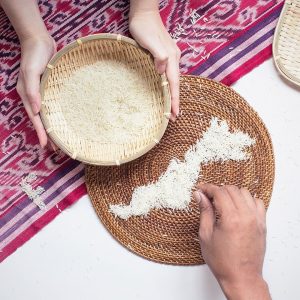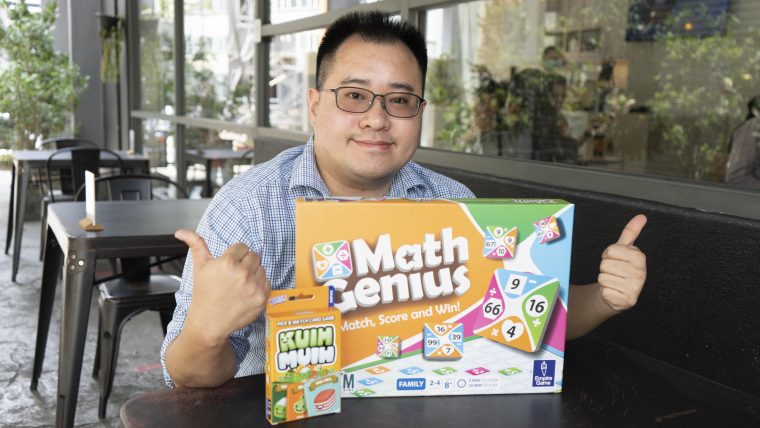
Last week, we featured a list of Malaysian-made board games for everyone to try. But while these games might be good, clean fun for us players, we wanted to know what it’s like being the brains behind the game.
Being the inquisitive minds that we are, we spoke to Mike Ooi, a local game designer who gave us an inside look on what the industry is like here in Malaysia. We were even given a chance to try out his latest game Kuih Muih as well as his previous hit Math Genius.
Hi Mike! Can you give us a quick introduction about yourself and what you do?
I’m a Malaysian game designer who is trying to get as many games published as possible and introduce all kinds of new board games to Malaysians. I came from a financial background, but now I’m doing this full time.
So, what inspired you to make board games?
Well, kids these days, they play a lot of video games. At one time I was also trying to get into video games, but eventually I saw that video games were doing more harm than good to kids. Firstly, it decreases their attention span. Secondly, video games generally don’t make the kids think. It’s all about muscle memory, just pressing buttons or repeating the same things.
So for board games, I see that there are two ways to connect people. One is the social side, connecting with your friends. The second is that board games make you think.
Normally when I design a game, usually I try to make it family oriented. So everyone can play as long as they’re above a certain age. Example is with Math Genius you need to be 8 years or above because it includes division and multiplication, while Kuih Muih I would actually say is suitable for kids who are 7. But some kids can play as young as 6 if they have their parent’s guidance.
How did you get started as a board game developer in Malaysia?
When I first started, there was no one to learn from because this industry is actually very new in Malaysia. In the beginning, I tried to read every forum and online article about designing board games.
I think I spent like three months on my computer, just reading every night. I was either on Facebook forum, Reddit or some of the more specialised board game forums like Board Game Geek. But sometimes you need to filter out the information you receive; certain things that apply in Europe are not always suitable for an Asian or Malaysian market.
Can you give us an example of the differences between European and Malaysian players?
The majority of Malaysian gamers tend to love games that have player interaction, whereas European games are more about “I’m doing my stuff, and then at the end of the game we compete to see who has more points”. There’s not much of the sabotage or interaction that local players prefer.
You mentioned earlier that board games are a new industry in this country. Could you tell us some of the challenges you faced when making your own games?
First, there are no distribution channels. Those that do exist are more for established companies like Mattel and Hasbro games. And retailers are actually very reluctant to carry new products because it’s very high risk. Of course, we must understand that the rental for their shops are also very expensive, so they don’t want to fill their shelves with things they can’t sell.
I think one of the main challenges as a developer is to prove that there is a demand for your games, which is why marketing and press coverage is so important. For example, when I first started Math Genius, it took a lot of time to gain traction. I had to do a lot of demos; as long as there was a holiday season, almost every day I would be out in retail shops doing demos and trying to boost the sales.
Exposure to players is also important. Going back to the previous question, one of the differences between the overseas board game market and the local one is that overseas rule books tend to be very thick, with a lot of story. Which is great if you like that sort of thing, but the majority of Malaysians don’t like having thick rule books. When the local players see rule books that are 20 to 30-pages thick, they tend to freak out a bit.
So I try to simplify my rules; as long as the rules can fit within two pages of an A4 paper, I will give the game a go.
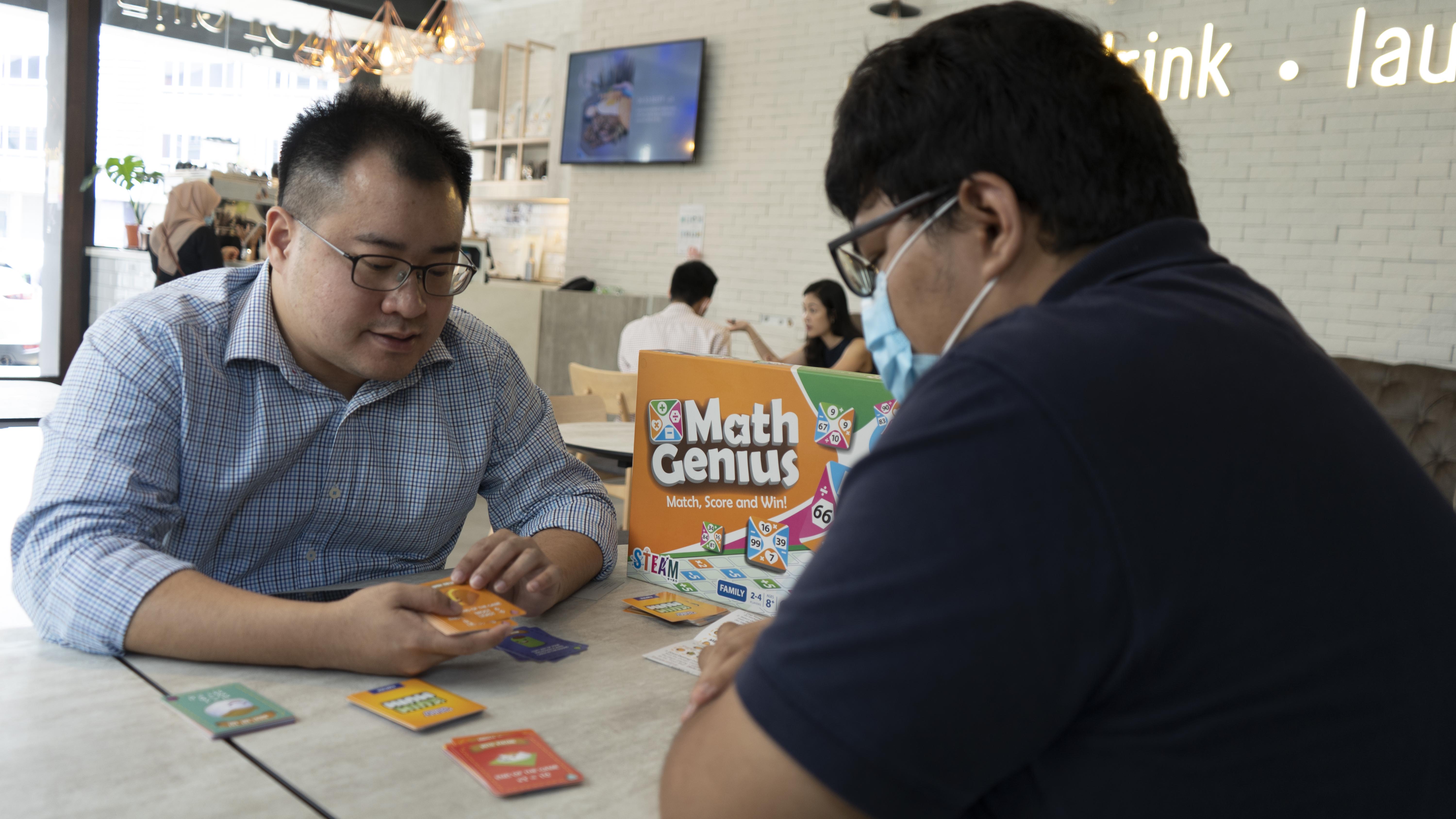
Nowadays a lot of people like to play video games on their phones or computers. As someone developing new board games, how does it affect your own game design?
It actually does influence a little bit because we like to look at the popular trends. But for video games, they usually don’t localise the content. They cannot localise because video games are trying to sell to people around the whole world. Even for apps, when you make an app it will be published on Google Play or Apple App store, which is seen by people worldwide, so they very seldom bother to localise their content.
Whereas for board games, we try to localize and add a Malaysian flavor. Because it’s a physical product, we can’t just immediately ship huge quantities overseas; there must be a distributor carrying it.
We also cater to the local audience by creating more affordable board games. There are a lot of good board games out there, but Malaysians generally don’t want to pay RM200 or more for a game that they’ll maybe only play a few times.
As a full-time board game designer, would you say that this job makes you money?
Barely surviving (laughs). This is my full-time job, but it’s giving me part-time income. It has to be supplemented with another part-time job which is giving me more income. But I think long-term wise, judging from the traction of all our neighbouring countries, this industry should be able to grow more.
Like Taiwan — 10 years ago they didn’t even have a board game industry. Today, their board game industry is very big. In Thailand, five years ago their board game industry was way behind us, but today they’ve surpassed us.
In the past, have you received negative feedback on your games?
Definitely. It’s part and parcel of the industry; there’s always haters and there’s always supporters. You have to listen to both sides, but you also have to filter (the feedback).
In my experience, one of the things that leads to the downfall of a designer is caring too much and getting too attached to their work.
When someone criticises your game, it’s actually a good thing. Because if they’re attacking your game, it means that they’re at least paying attention to your stuff. This is genuine feedback that will help you to improve — as long as you can accept it. If you ignore them and stay in denial, your game won’t ever get better.
You’ve mentioned that the Malaysian board game industry is growing. Do you think board games are a hobby that will appeal more to the general public or will it always be a niche thing?
For now it’s a niche, but going forward it’s going to spread out more into the general public. I’ll tell you why: for the general public to buy your games, your game must first be accessible to them.
Right now the majority of board games are not accessible; it’s all online. If you look at consumer behaviour, when they go to the online store, they tend to only search for things they already want. But if it’s a retail store, they’re more likely to encounter new games that they may be interested in buying.
In the last few years, how do you think the Malaysian board game community has changed?
Lately, they have become more supportive of local games, partially because local games have started to improve in the quality of their components and gameplay. Basically, we’ve started designing better games.
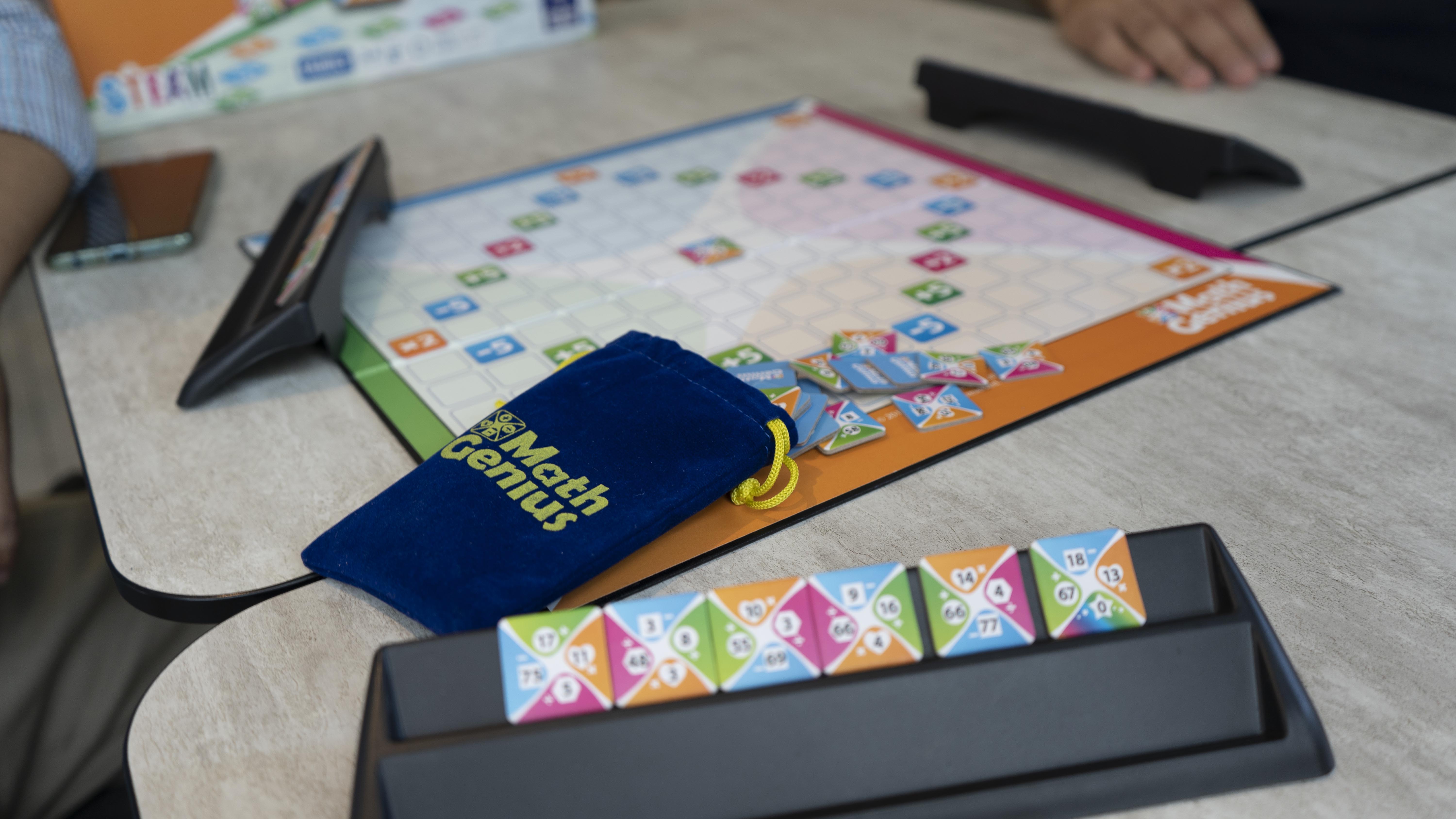
Currently, you have two games: Math Genius and Kuih Muih. Did you have any previous ideas or games that failed or you were unable to publish?
Actually, there are lots. I’ve probably designed more than 10 games, but these two are the only ones that I am confident enough to put money in and publish. Some of my old games were actually published in kids magazine. They were made for “print and play”, so the kids could print it out and try for themselves.
Are you planning any more games in the future?
Right now I’m thinking of doing a Borneo version of Kuih Muih which includes kuih from Sabah and Sarawak that you can’t find here in Peninsula Malaysia.
Aside from that, I’m also planning a two-player trading game called Merchants of Melaka.
What kind of advice would you give to someone who’s interested in making or designing their own games?
Number one: you need to play more games and mix with different players. You need to understand that every player will respond to certain games differently. Some games, your friends will rave about it, but other people will just hate it.
As a game designer, one of the most important things to do is to have a lot of play tests with different player groups. For example, young adults, children, married couples… they will all give you different ideas and feedback.
Also, you need to design games that are easy to learn. If you want to design a heavy game, a game that will take two hours or more to play, you’ve got to do a lot of play tests.
Another issue is that Malaysia has a lot of languages. So for your rule books and web version, try to print in two or three languages. If you have it all in just one language, your game will not sell very well.
Before we end, are there any last words you’d like to say to our readers?
To the general public, please do support our local games industry. There are actually some pretty good games available nowadays!
Kuih Muih
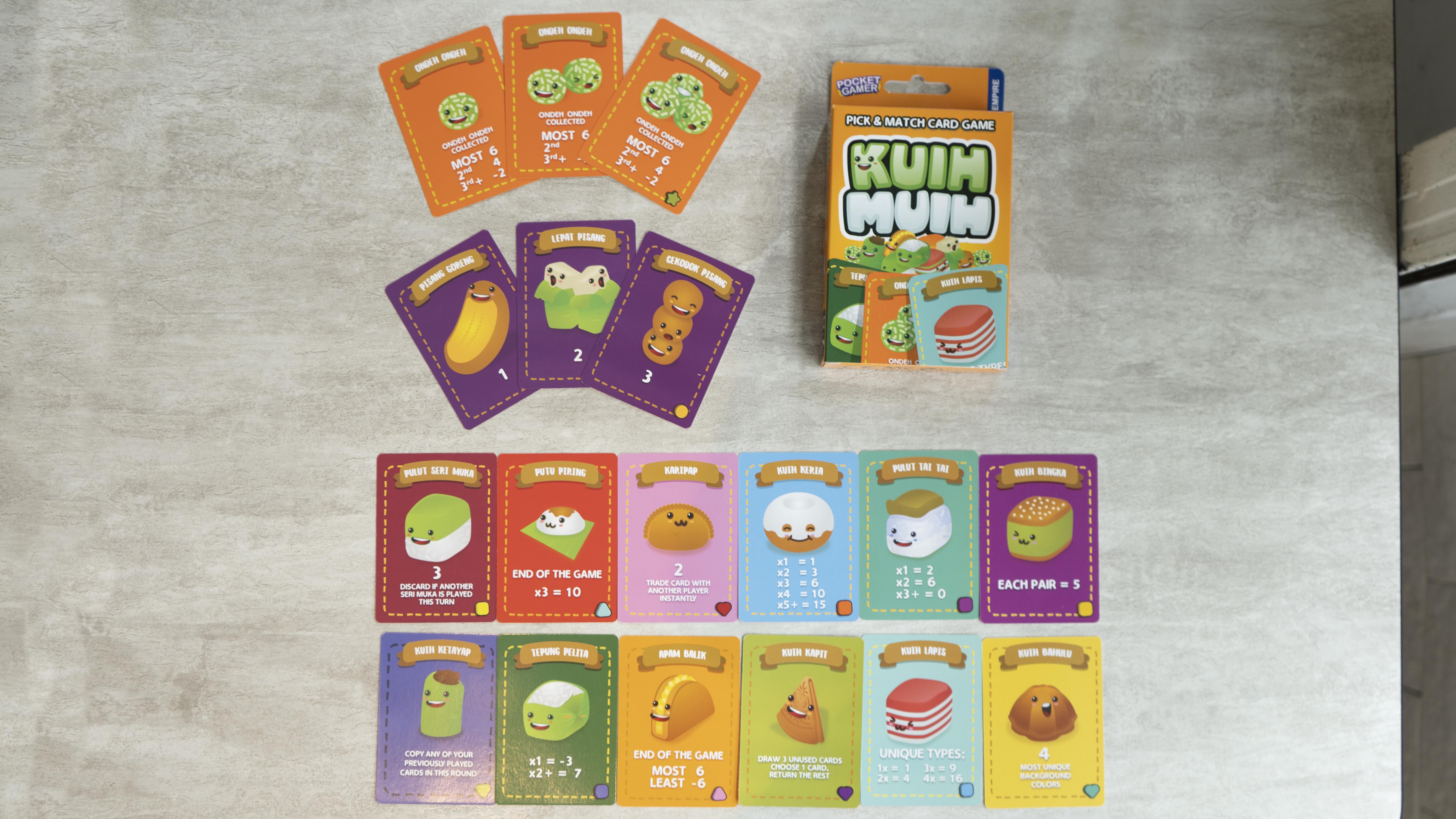
Released in August 2020, Kuih Muih is a simple yet addictive card game based around the wide variety of kuih that we all know and love. As a player, your goal is to pick the best combination of kuih to give you the most points at the end of the game.
Each of the adorable cards represents a different type of kuih, from the classic putu piring to the addictive ondeh-ondeh to the colourful kuih lapis. In this game, all of these kuihs are worth a particular number of points. In addition, some have special abilities — for example, collecting three putu piring will give you 10 bonus points at the end of the game.
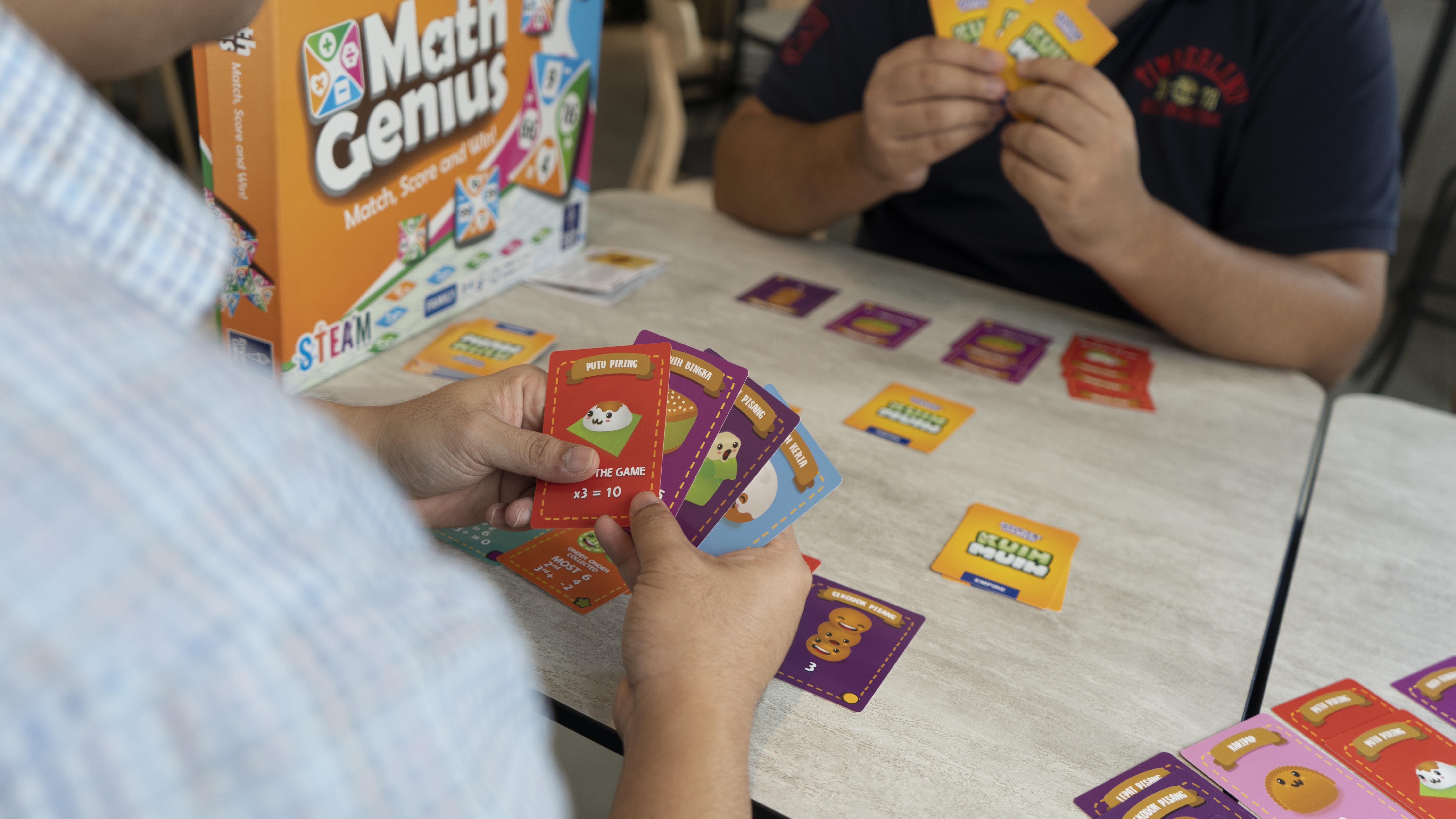
The game is easy to learn, but surprisingly hard to master.
Kuih Muih comes with 3 ‘default menus’ (which determine the types of cards used in your deck) titled A, B and C, but experienced players can set up their own menus by mixing and matching the different kuih cards. Depending on the menu, the focus may be completely different from game to game.
For example, Menu B is all about collecting as many apam balik cards as possible — the person who has the most at the end of the game gains extra points, while the person who has the least actually loses some of their points.
Menu C, on the other hand, is focused on the kuih lapis cards, which come in a variety of colors. Playing with this menu involves everyone desperately trying to find the right colored kuih lapis to complete their own sets before anyone else.
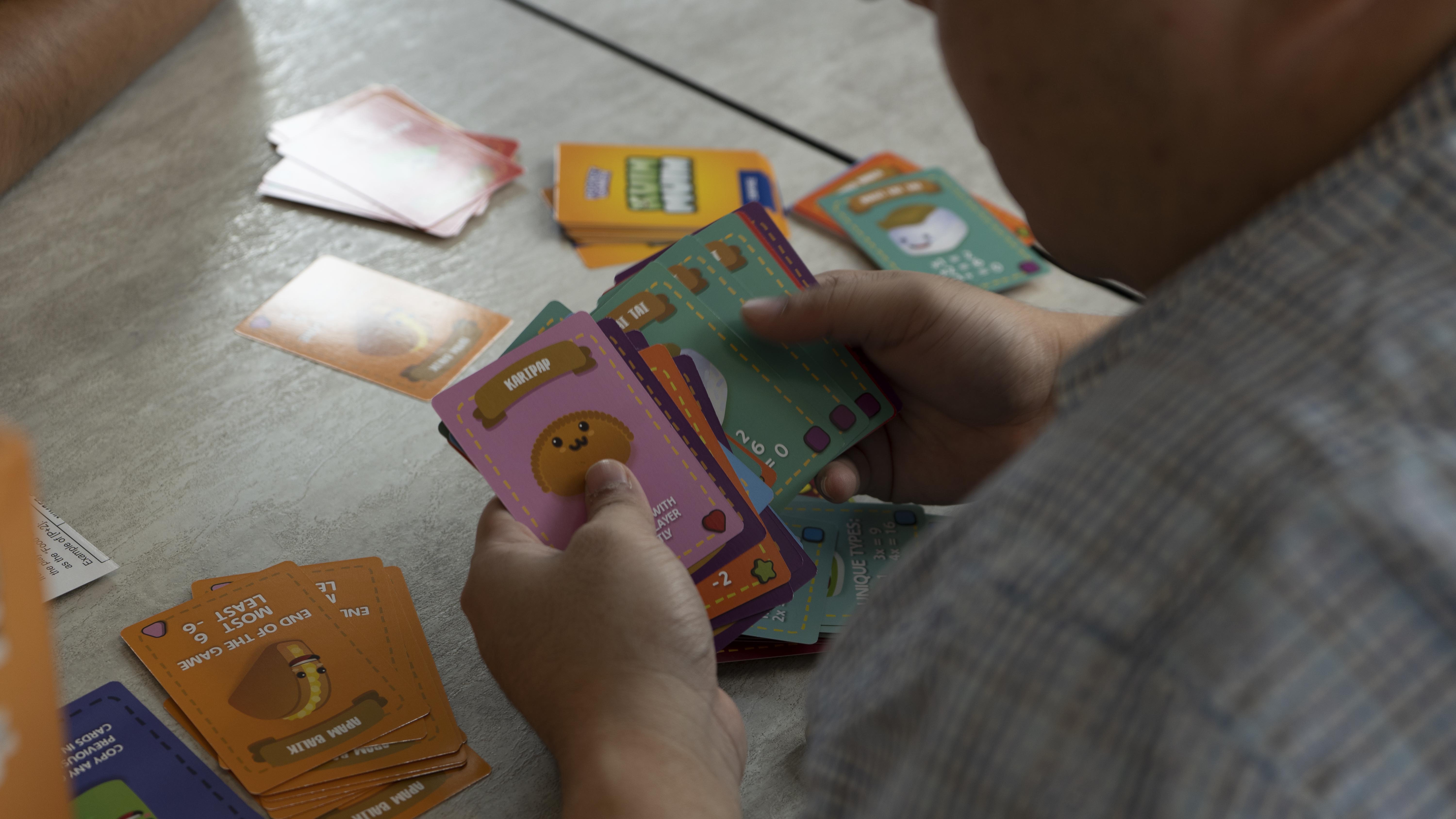
Designed for two to six players, each game of Kuih Muih consists of three rounds where every player tries to gather as many points as possible. At the end of the third round, the person with the highest score wins.
Check out the links below to get your own set of Kuih Muih at only RM30!
Looking for Something to Do This Long Weekend?
Don’t worry, we’ve got you covered. Check out our latest article to discover some awesome activities in the Klang Valley that you can try out. From dive-in movies to indoor theme parks, we’ve got something for everyone in the family.






